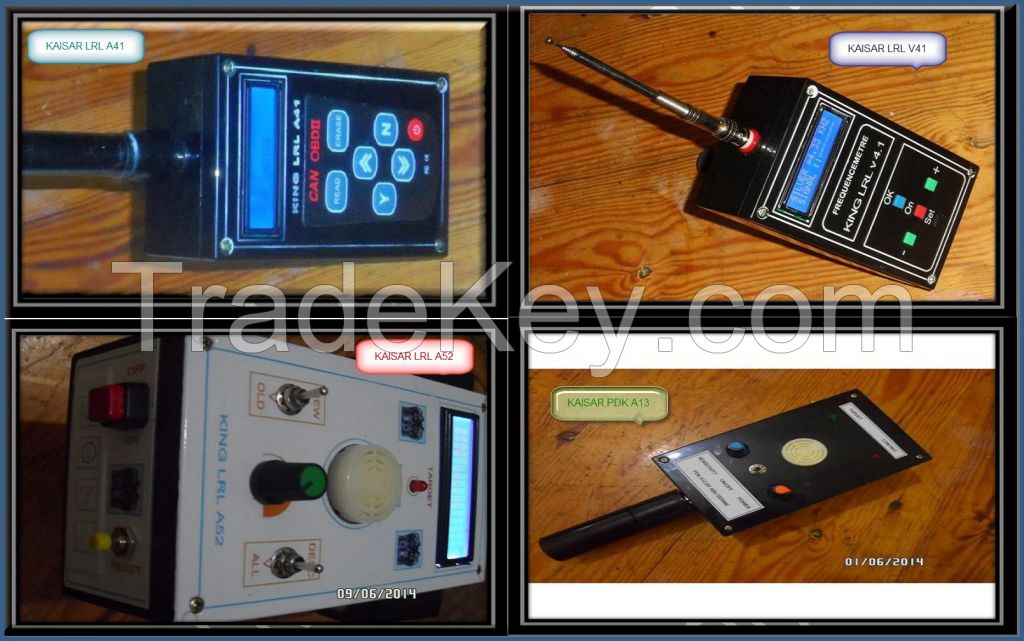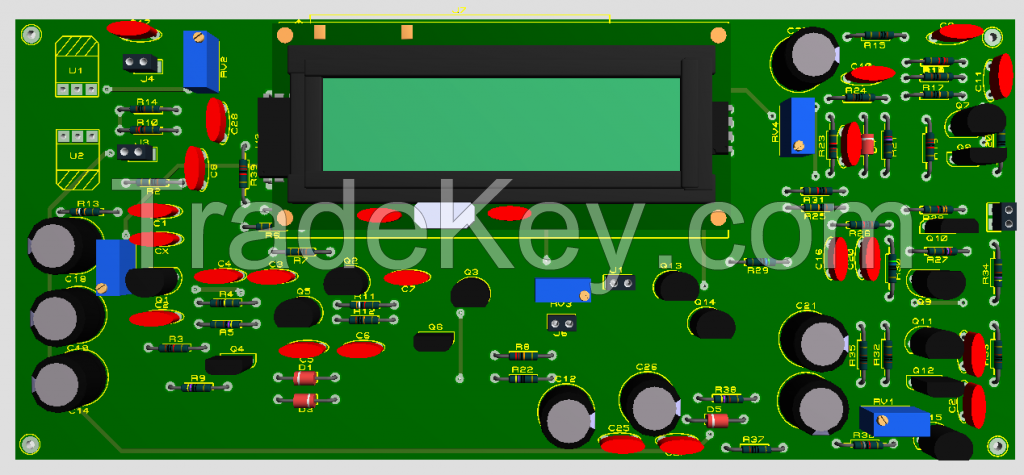





Precio FOB
Obtener el precio más reciente4500 ~ 6000 USD / Unit ( Negotiable )
|10 Unit Minimum Order
País:
Tunisia
N º de Modelo:
MD01 - MD02 - MD03 - MD04
Precio FOB:
4500 ~ 6000 USD / Unit ( Negotiable ) Obtener el precio más reciente
Lugar de origen:
-
Precio de pedido mínimo:
4500 per Unit
Cantidad de pedido mínimo:
10 Unit
Detalle de embalaje:
-
El tiempo de entrega:
-
Capacidad de suministro:
500 Unit per Year
Tipo de pago:
Money Gram, T/T
Grupo de productos :
-
Tunisia
Persona de contacto Ridha
Kasserine, Kasserine Governorate
ABOUT LONG RANGE PROFESSIONAL METAL DETECTOR LRPMD Congratulations for your choice!!! You have in your possession the only real device for detection of treasures from a long distance, result of more than *3 years of research and five years of experiments not in laboratory but in real conditions at random spots and by using a simple metal detector for confirmation of the result. The LRL is the natural evolution of King LRL, with lots of extra capabilities and improvements that happened with the guidance of our customers. THEORY Probably it is the only long range detector that works with the specific IR sensor MURATA, which produces pulses when its surface is stroked from a particle or particles with sufficient energy. The IR detector gives approximately one pulse **0 ms with a source of 1mR. This sensitivity is sufficient to determine if the buried target is old or new. A typical old buried target gives usually more than two pulses. Here we use a larger special IR sensor, which is the simplest way to improve the sensitivity under the limit of 1mR. The main difference that were interested in is that the IR sensor usually coverts all the energy of the old buried target in pulses, so that the pulse height can be used to determine the original energy in the metal. The special IR detector is extremely sensitive to the IR band and must work in a special wooden space with a specific lens. A source less than 1mR is sufficient to give this output signal. However, for this detection to be possible, the simultaneous use of low frequency electromagnetic transmission with high duty cycle and AM modulation is required, so that the receiver can read phenomenons that insure in the area of nanometers at a frequency easier detectable. At the LRPMD the interest is only in the direct conversion of the received energy into DC voltage and in the height of this voltage, which can be used for determination of the original energy. For this to be possible, the sensor must be in standard position and with a lens (see back side of our Box LRPMD) of a special material. This is the main reason LRPMD the use of a plastic or synthetic material box is not possible. Unfortunately the IR sensor is sensitive to static fields created by plastic surfaces that surround it. This forces us to use materials that unfortunately raise the production cost. This sensitivity specificity to static fields created by plastic surfaces led us to use a box only of wood, without metallic screws, hermetically closed, resulting in the increase of the cost and the calibration time of the device. Also, another great advantage of the wood is the temperature stability inside the device, which makes its function reliable in extreme high or low temperatures. Your device is very sensitive. It is capable of detecting Au, Ag, Cu, buried more than *0 years and at a depth until *5 meters maximum. The maximum detection distance depends only on how old the buried object is and cannot be more than ***0 meters, a distance feasible ONLY by night. By day the maximum detection distance is reduced to the half (approximately **0 meters). In any case, your device does not work like common metal detectors, which are considered direct stimulation target detectors, but as a detector that detects the phenomenon created on the earth surface by the buried target and not the target itself. Appropriate filters and chips are used for maximum reception sensitivity and function stability of the device. There is no similarity or relation with dowser devices. It is clearly an electronic transmission and reception device, adjusted and tuned exclusively for the detection of noble metals and always at detection order: gold, silver, copper. With the appropriate using experience, you will have no unclear indication from the targets or indication uncertainty at your working space. The detection direction or the time of day or night youre using the device play no role. Theoretically, each field has a greater warp in the North-South direction. In this specific case, we could say that we could have a greater detection range in this direction and use this phenomenon to our benefit. However, experiments showed that the systematic research of an area can give results without the utilization of the physical magnetic directions at the research area. For the correct usage of the device you must follow strictly the instructions which, in combination with the experience youll get, will give you the satisfactory result. CAPABILITIES OF OUR DEVICE - FAQ You dont have a magic device that can do everything, but a real one that has the maximum detection limits and capabilities, always under appropriate conditions. Here well analyze all these parameters, for you to have a full image of the capabilities of your device and of the facts you can use to your advantage for the most effective use. All these observations have been certified by research. It would be good to inform us on any extra observation you might possibly certify, for a possible improvement. 1. Is there any season of the year that is considered best for detection? No. Throughout the year the detection phenomenon remains stable with minimal changes in its volume. 2. Is the day or the night best for the research? Are there maybe some hours with better performance? No. The day or the night does not play any role for the research. Also, although the importance of a specific best hour for each area is referred by many people, we have concluded that the hour has no importance, because the differentiation is minimal. Just, during the night the research distance doubles. 3. Has the weather any particular importance during the research? Yes, it has. We mentioned before that the season doesnt matter. But the weather does. We have the best results in good weather and dry earth. There is a slight performance decline before and after rain. But while its raining there is a detection performance decline that touches *0%. During storms with lightning at the research area we have zero detection capability. There is a strange phenomenon, the cloud-to-cloud and cloud-to-ground lightning absorbs the phenomenon thats created above the buried noble metals and thus the detection from your device is not possible. Depending on the duration of this severe cloud-to-ground lightning, it is possible for the detection area to remain dead for more than a week. On wet ground, on mud and near streaming water it is not good to perform any research. We may catch the target, but we are not sure about the zero spot, because of the radiation scattering caused by water. 4. What is the maximum depth we can have? The device literally detects the phenomenon created on the earth surface from the object itself, so it is completely normal that it is able to detect objects near 6 meters depth. If you get a specific signal at a specific spot, regardless whether the metal detector detects anything, you are obliged to dig. In this case the object is at a depth over the limit of the metal detector.
| País: | Tunisia |
| N º de Modelo: | MD01 - MD02 - MD03 - MD04 |
| Precio FOB: | 4500 ~ 6000 / Unit ( Negotiable ) Obtener el precio más reciente |
| Lugar de origen: | - |
| Precio de pedido mínimo: | 4500 per Unit |
| Cantidad de pedido mínimo: | 10 Unit |
| Detalle de embalaje: | - |
| El tiempo de entrega: | - |
| Capacidad de suministro: | 500 Unit per Year |
| Tipo de pago: | Money Gram, T/T |
| Grupo de productos : | - |